Treasure hunter Greg Brooks, who led a trouble-plagued relief mission to Haiti last winter, has set his sights on a salvage job with both business and humanitarian components.
Brooks, who is from Gorham, wants to put his sea salvage skills to work removing an estimated 16,000 pounds of mercury from a 66-year-old shipwreck off the Maine coast. He says the mission would defuse an environmental time bomb, although scientists have concluded the wreck is best left undisturbed.
The federal government prohibits any activity near the ship, but Brooks is hoping he can get the ban lifted. If he does, he would gain access not only to the mercury, but also to other cargo, including what he says is copper-platinum wire worth $200 million.
The wreck is the Empire Knight, a British freighter that struck an underwater ledge, split in two and sank in a blizzard near Boon Island, off the coast of York, in February 1944. In 1990, the Coast Guard learned the ship carried 221 flasks of toxic mercury.
Divers subsequently recovered 1,230 pounds of the mercury and 2,200 pounds of contaminated debris, but determined that another 16,000 pounds of mercury had escaped from the casks and was in a cargo hold near the stern of the ship. Officials eventually decided it would be better to leave the mercury alone, concluding that in time, sediment will cover the ship, burying it and its toxic cargo.
Attempting to remove the mercury, officials said, could result in the mercury escaping into the sea and contaminating the food chain.
In the late 1990s, as salvage companies tried to stake claims to the wreck, federal officials created an environmental safety zone around it, prohibiting diving and salvage activities.
Brooks thinks its time to lift the limits and allow him to remove the mercury using a high-pressure vacuum and filter system. That could also clear the way for him to salvage what he believes is copper-platinum wire that was included in the wartime cargo and could be what he terms “semi-valuable” — to the tune of $200 million or so.
Officials have said they believe the wire is copper only and pegged its value at about $1 million in the mid-1990s, although prices for the metal have risen since then.
Brooks said his research suggests the more valuable wire is aboard, and that he also believes there’s a “secret cargo” of coins in the wreck. Those coins, he said, could be worth $10 million to $15 million for the metal content alone, and more than that if there are coins that are valuable to collectors — which is likely, given the age of the wreck.
Brooks said he has been making the rounds with state marine and environmental officials and has also talked with congressional aides, hoping to get the go-ahead to do a survey of the wreck using remote-controlled submersibles as the first step in what could be a salvage effort. But he doesn’t feel like he’s getting anywhere.
“Politically, it could be a nightmare for somebody,” he said, if the survey reveals mercury has been seeping out while the official line has been to leave the wreck alone.
But even if the mercury is still contained, he says, the ship is certainly rusting and the potential for a catastrophe will continue to rise if nothing is done.
“I live and work on the ocean and I don’t want several tons of mercury floating around,” he said. “Sticking your head in the sand will not make it go away.”
Brooks is used to sticking his neck out rather than burying his head. After an earthquake devastated Haiti in January, he collected donations from Mainers, put them aboard his 220-foot salvage vessel, the Sea Hunter, and set off for Haiti.
Storms along the East Coast delayed the ship, and then the Coast Guard held it in Miami for 12 days to resolve safety and licensing issues. Brooks encountered even more problems trying to unload the cargo once he finally reached Haiti. But he still managed to get most of the relief supplies to Haitians in need.
Brooks’ occupation, however, is salvage work, not humanitarian aid.
He said he’s currently trying to salvage platinum from a wreck off Massachusetts, and that he has equipment to work in depths up to 1,000 feet. The stern of the Empire Knight is in about 260 feet of water.
But marine and environmental officials say they haven’t seen any change in the condition of the Empire Knight that warrants a sudden shift in the policy to do nothing to disturb the wreck.
Mark Hyland, director of the Bureau of Remediation & Waste Management for the Maine Department of Environmental Protection, said some mercury appears to have seeped into the sediment directly below the wreck, but all the evidence suggests the rest of the mercury is still in the hold near the ship’s stern.
Since mercury is heavier than water, he said, it most likely isn’t going anywhere if it’s left alone.
“Right now, it’s a threat, but a stable threat,” Hyland said.
He noted that the state and federal governments spent $7 million cleaning up the mercury most in danger of escaping the wreck in the mid-1990s, and now it’s time for nature to cover it with sediment “and basically entomb it.”
Hyland said he would be happy to review any plan to remove the mercury, but he noted that Coast Guard and other officials would also be involved.
Cmdr. Derek Dostie, who heads up the Coast Guard’s pollution prevention efforts, said adopting the safety zone required drafting a rule, publishing it, gathering public comment and then enacting it. Lifting the restrictions would require the same lengthy process, he said.
If Brooks wants to remove the mercury, he said, and the restrictions are lifted, the Coast Guard would need to scrutinize his proposal and review his credentials to do the work. Dostie said the plan would also have to cover the permanent disposal of the mercury.
Even though he’s been at his post in Maine only a few weeks, Dostie said, the conclusion in the Coast Guard’s files is clear.
“It would probably be safer in the wreck,” he said.
Staff Writer Edward D. Murphy can be contacted at 791-6465 or at:
emurphy@pressherald.com
Copy the Story Link
Send questions/comments to the editors.


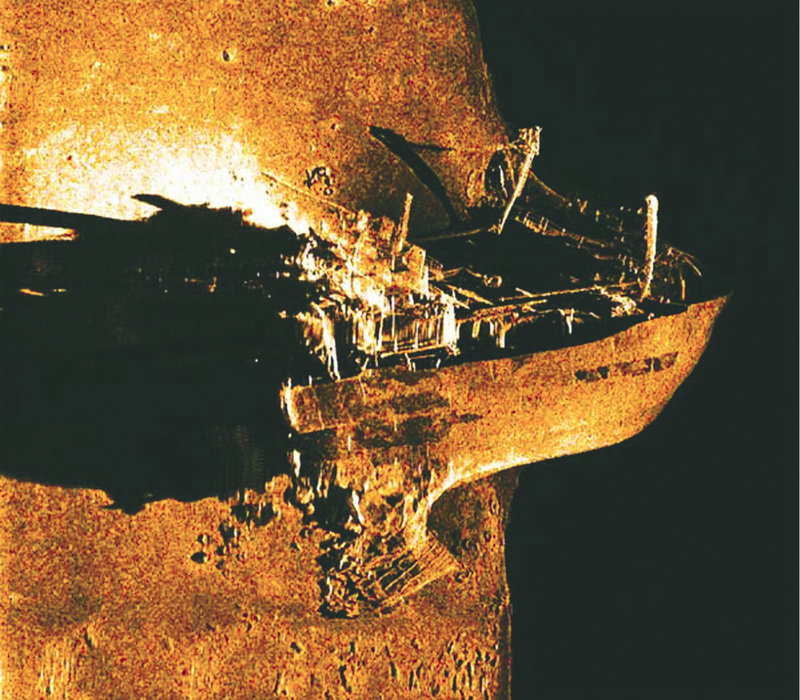
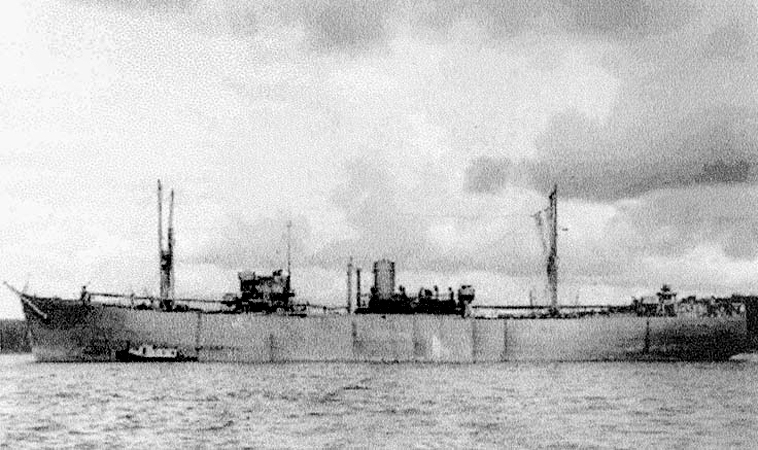
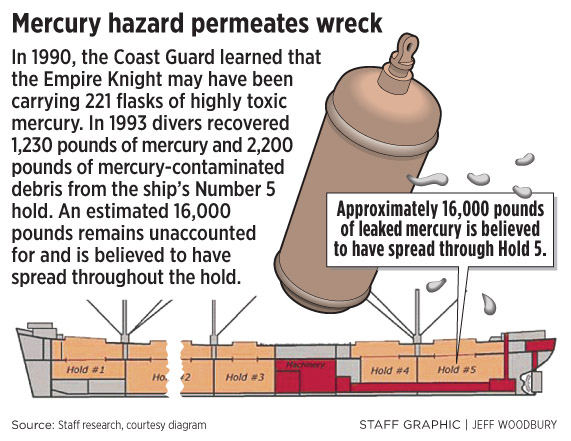
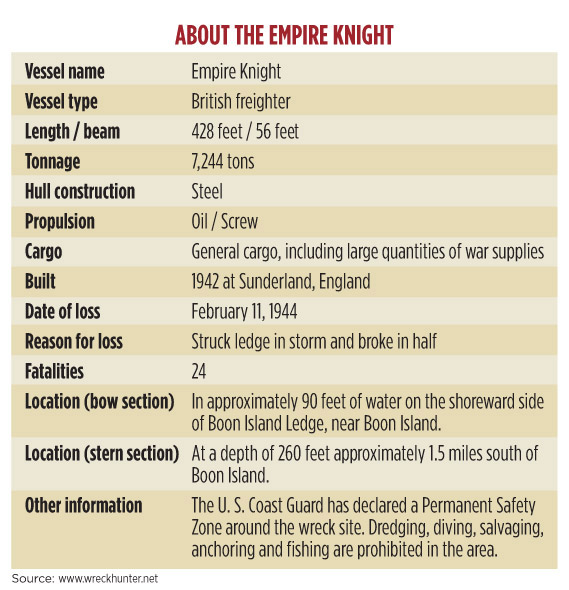
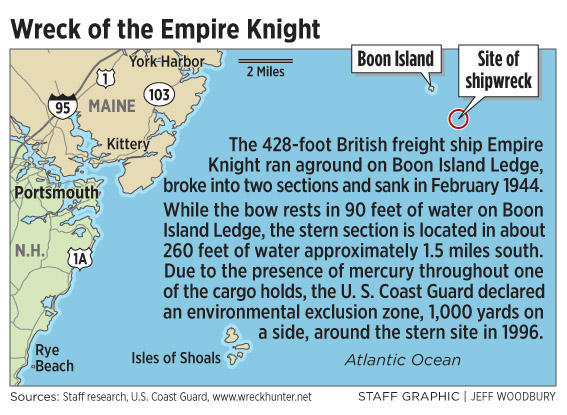

Success. Please wait for the page to reload. If the page does not reload within 5 seconds, please refresh the page.
Enter your email and password to access comments.
Hi, to comment on stories you must . This profile is in addition to your subscription and website login.
Already have a commenting profile? .
Invalid username/password.
Please check your email to confirm and complete your registration.
Only subscribers are eligible to post comments. Please subscribe or login first for digital access. Here’s why.
Use the form below to reset your password. When you've submitted your account email, we will send an email with a reset code.